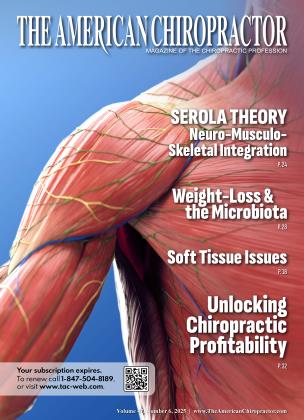Balance is an intricate and dynamic function of the human body, governed by a complex interplay of sensory inputs and neurological processing. For chiropractors, understanding the neurology of balance is essential for optimizing patient outcomes, particularly for individuals experiencing dizziness, postural instability, or coordination deficits. Recent advances in balance evaluation and therapy underscore the importance of precise, objective assessment methods that target neurological function.
The human balance system relies on three primary sensory modalities: the vestibular system, the visual system, and the proprioceptive system. The vestibular system, housed within the inner ear, detects changes in head position and movement through semicircular canals and otolith organs. These structures convert mechanical stimuli into neural signals, relaying critical information to the brainstem and cerebellum to maintain equilibrium. Disruptions in this system, whether due to age-related degeneration or injury, can significantly impair a patient’s stability and increase fall risk.
Equally vital is the visual system, which provides spatial orientation by integrating depth perception, peripheral vision, and focal awareness. The brain continuously processes visual cues, adjusting posture and movement in response to environmental changes. Any impairment in this system, such as reduced visual acuity or delayed processing speed, can contribute to imbalance, particularly in dynamic settings.
The proprioceptive system further enhances stability by supplying real-time feedback from mechanoreceptors located in muscles, tendons, and joints. These receptors transmit sensory data through spinal pathways to the cerebellum, where it is integrated with vestibular and visual input.
A well-functioning proprioceptive system ensures accurate movement coordination and postural adjustments, reinforcing neuromuscular control. Spinal misalignments or dysfunctions can interfere with this feedback loop, potentially leading to deficits in balance and coordination.
The brainstem and cerebellum serve as central processing hubs for balance regulation. The vestibular nuclei within the brainstem integrate sensory input and coordinate postural reflexes, while the cerebellum refines motor commands to ensure smooth, coordinated movements.
The cerebral cortex also plays a role in higher-level balance functions, engaging cognitive processes such as spatial awareness and adaptive motor planning. Notably, research has demonstrated that balance training can drive neuroplasticity, strengthening neural connections and improving stability over time.1
For chiropractors, leveraging an objective, neurology-based approach to balance assessment and therapy is essential. By employing innovative evaluation techniques, practitioners can identify specific sensory or neurological deficits and implement targeted interventions. Emerging research highlights the efficacy of specialized balance training systems that incorporate multi-sensory stimulation and cognitive engagement, offering an evidence-based pathway to improved patient outcomes.
Understanding the neurophysiological underpinnings of balance empowers chiropractors to refine their treatment strategies, enhance postural control in patients, and mitigate fall-related risks. As balance science continues to evolve, integrating cutting-edge, neurologically driven methodologies into clinical practice will remain at the forefront of effective patient care.

Dr. Moe Pisciottano is the CEO of the Pro-Adjuster Group and has been a practicing chiropractor in Pittsburgh, Pennsylvania, for 35 years. Dr. Pisciottano is the first and only chiropractor to receive the coveted Ernst and Young Entrepreneur of the Year award. To learn more, visit www.learnproadjuster.com.
References
1. Sun Y, Hurd CL, Bames MM, Yang IF. Neural plasticity in spinal and corticospinal pathways induced by balance training in neurologically intact adults: a systematic review. Front Hum Neurosci. 2022 Aug 17:16:921490. doi: i0.3389/fnhum.2022.921490. PMID: 36061497; PMCID: PMC9428930.
 View Full Issue
View Full Issue






